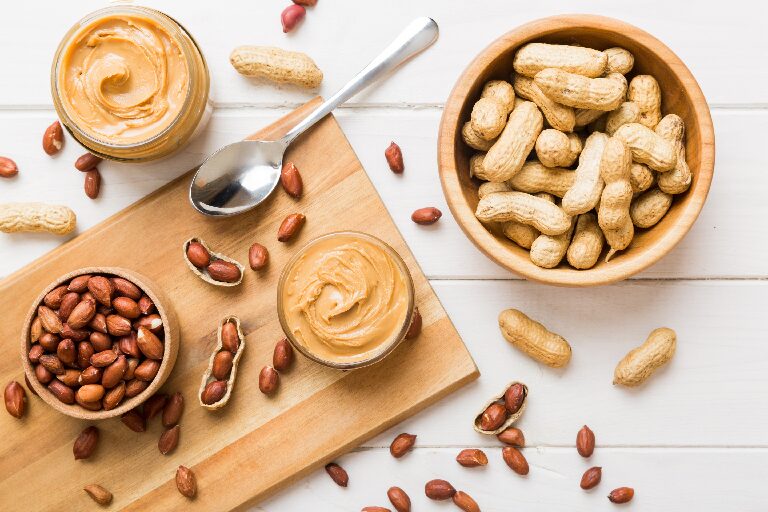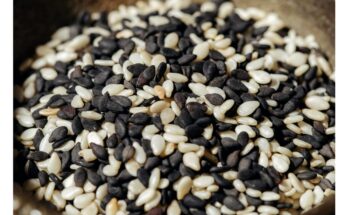Groundnuts, also known as peanuts, are called nuts because of their high nutritional value. They are widely used in meals and snacks.
Unlike other nuts, groundnuts grow underground. The plant is a small annual herb that grows up to 55 cm tall. Its flowers develop a stalk that enters the soil, forming pods that usually contain two seeds. When the plant matures, its leaves turn yellow. The plant is then pulled out, dried for 4 to 6 weeks, and the groundnuts are separated.
Nutritional Value
Groundnuts are rich in protein. They have more protein than meat, eggs, and more than most plant-based foods, except soybeans and yeast. Although groundnuts lack some essential amino acids, these can be balanced by consuming them with milk.
To aid digestion, groundnuts should be chewed well. Roasting them improves digestibility. They can also be ground into peanut butter, which is rich in fat. A little salt or peanut oil is sometimes added for better texture.
Nutrients in 100g of Groundnuts
- Energy: 567 kcal
- Protein: 25.3 g
- Carbohydrates: 26.1 g
- Fat: 40.1 g
- Fibre: 3.1 g
- Minerals: 2.4 g
- Calcium: 90 mg
- Phosphorus: 350 mg
- Iron: 2.8 mg
- Thiamine : 0.90 mg & Niacin : 19.9 mg
- Some Vitamin B Complex
Groundnuts are one of the most nutritious foods, rich in energy, protein, phosphorus, thiamin, and niacin.
Health Benefits
Groundnuts contain easily digestible oil that helps soften the skin and act as a mild laxative. Studies show that eating a handful of roasted groundnuts with unsweetened tea or coffee before lunch can reduce appetite and support weight loss.
They can also be used to make groundnut milk, a good substitute for dairy milk. To prepare it, soak lightly roasted groundnuts in water for two hours, remove the skin, grind them into a paste, and mix with water (three times its volume). After straining, this milk can be boiled without losing its nutrients.
Groundnut milk can also be turned into curd by adding a small amount of dairy curd and leaving it overnight to set. The result tastes like regular curd and has similar benefits.
Chewing fresh groundnuts with a little salt strengthens gums, prevents mouth infections, and protects tooth enamel. However, rinsing the mouth afterward is necessary.
Applying a mix of groundnut oil and lime juice on the face daily before bed keeps the skin fresh and prevents acne.
Ways to Eat Groundnuts
Groundnuts can be eaten raw, boiled, steamed, or roasted. They are also used in sweets like peanut candies and chocolates. Groundnut flour is becoming popular because it is more nutritious than wheat flour.
Tender groundnuts can be used as vegetables, and germinated groundnuts are even more nutritious, especially in vitamins B and C.




